Motorcycles are often seen as becoming increasingly complex with each passing year, packed with more and more electronics. You might hear riders grumble, questioning the necessity of all this “crap” on their bikes, yearning for simpler times. The core of this sentiment often boils down to a feeling of being forced to accept unwanted technology, and perhaps a suspicion that it’s all just a way for manufacturers to inflate prices. While there’s some truth to the evolving technological landscape driven by regulations and advancements, there’s another side to the story, one that Triumph has masterfully tapped into with the Street Twin.
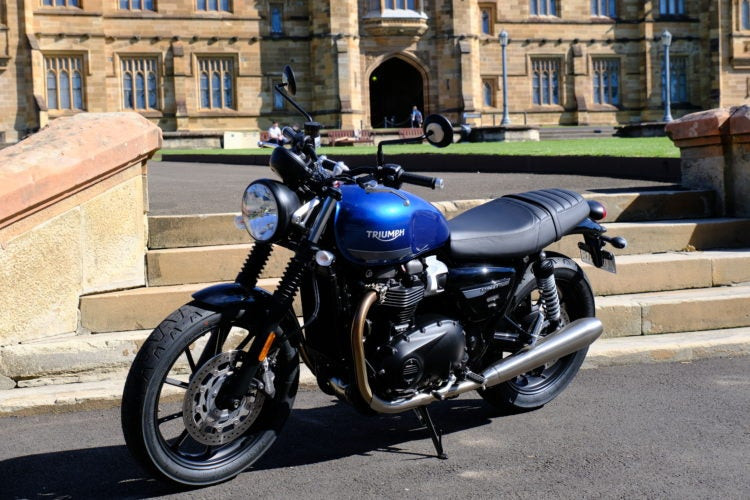 The Triumph Street Twin exudes a cool and understated presence on city streets.
The Triumph Street Twin exudes a cool and understated presence on city streets.
Instead of loading bikes with every gadget imaginable, Triumph recognized the appeal of creating accessible, relatively affordable machines that still deliver a premium experience. Enter the Triumph Street Twin. This model strategically incorporates technology where it counts – ride-by-wire throttle, adjustable traction control, and ABS, all selectable through Road and Rain riding modes. However, these features are implemented with cost-effective electronics, allowing Triumph to keep the price point attractive. The use of cast wheels further contributes to affordability compared to more expensive spoked alternatives. This isn’t about cutting corners where it matters, but about smart choices that make the Street Twin accessible to a wider range of riders.
While the Street Twin has been a staple in Triumph‘s lineup for several years, its enduring popularity speaks volumes. Positioned at the entry point of Triumph’s Bonneville twin-cylinder range, it cleverly carves out its niche. It stands as a compelling alternative to less sophisticated offerings, like those from Royal Enfield’s 650cc twins. Although the Street Twin commands a higher price, it justifies this with significantly enhanced sophistication, superior performance, and notably better build quality, all while evoking the same desirable classic motorcycle spirit.
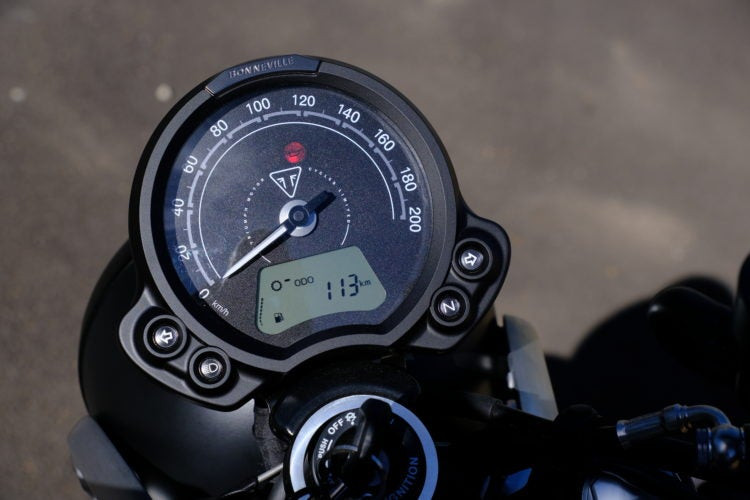 The Street Twin’s single gauge provides essential information in a clean and uncluttered design.
The Street Twin’s single gauge provides essential information in a clean and uncluttered design.
The Triumph Street Twin isn’t just popular; it’s Triumph‘s best-selling classic twin and overall top seller, leading the modern retro motorcycle market. What exactly makes this bike such a resounding success?
For starters, the Street Twin is undeniably a beautiful motorcycle. It’s imbued with classic Triumph design cues, offering a visually light and open feel. While the iconic, slim fuel tank of the 1960s Bonneville might be missed by some, the current tank design, though more substantial, still works harmoniously with the overall aesthetic. Despite its seemingly compact size, the fuel tank cleverly houses a surprising amount of internal hardware.
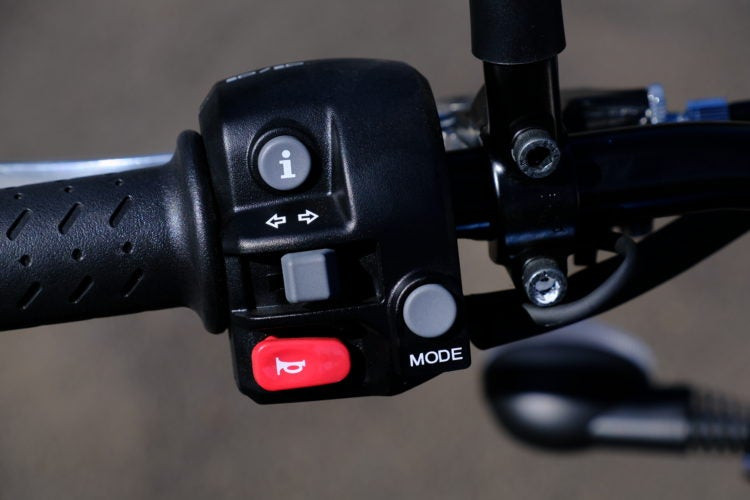 Electronic components are integrated seamlessly into the Triumph Street Twin without being intrusive.
Electronic components are integrated seamlessly into the Triumph Street Twin without being intrusive.
The exhaust pipes are a significant upgrade from Triumph‘s typically bulky standard mufflers. Resembling those found on classic Nortons, they contribute to the bike’s refined appearance and emit a pleasingly throaty exhaust note. The closer you examine the Street Twin, the more its thoughtful design details emerge. The neatly integrated gear change, the elegant handlebar controls, the quality of the paintwork, the sculpted seat, and the instrument cluster – all these elements demonstrate a deliberate design approach where even the single dial instrument is a stylistic choice, not a compromise.
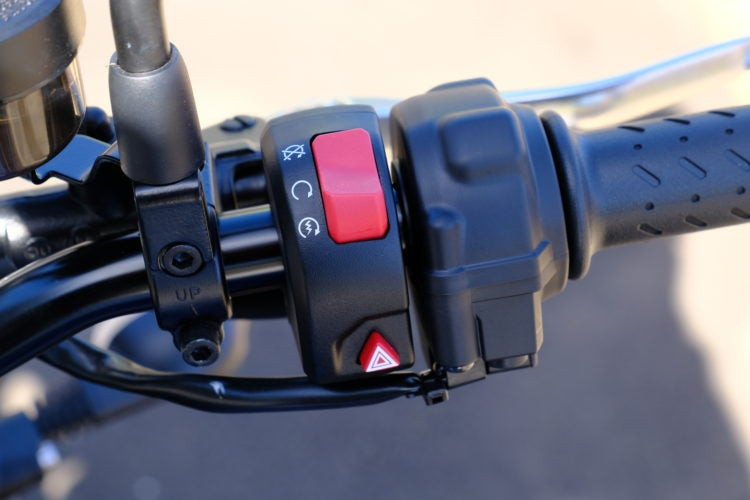 Simple yet elegant, the Triumph Street Twin showcases thoughtful design elements.
Simple yet elegant, the Triumph Street Twin showcases thoughtful design elements.
While the instrument layout prioritizes speed numerals over a rev counter dial, a matter of personal preference, the overall functionality remains excellent. Both brake and clutch levers are adjustable, a premium touch often overlooked at this price point. The slightly more padded seat maintains a comfortable and accessible 760mm height, and the bike’s dry weight of 198kg is noticeably lighter than the larger Bonneville models. Ergonomics are well-considered, with a rider triangle that feels naturally comfortable, eliminating the common need to adjust handlebars. Triumph has clearly listened to feedback from previous iterations, refining the Street Twin‘s ergonomics for improved rider comfort.
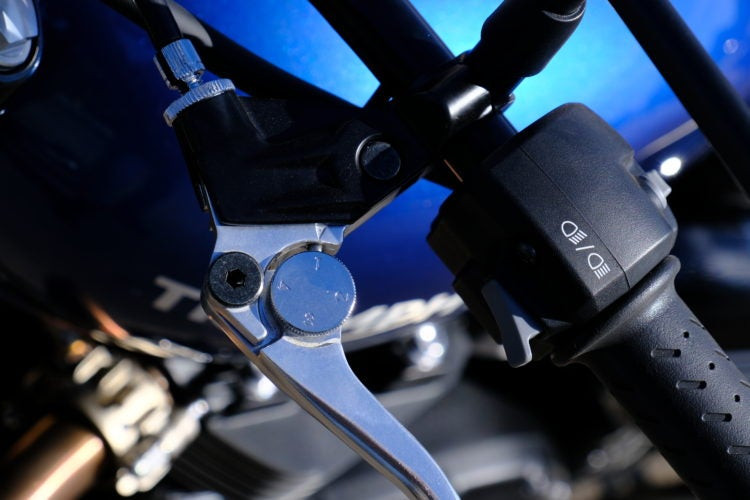 Adjustable brake and clutch levers add a touch of premium functionality to the Street Twin.
Adjustable brake and clutch levers add a touch of premium functionality to the Street Twin.
The clutch action is light and user-friendly, and gear changes are smooth and positive, a marked improvement over some earlier Triumph gearbox designs. Smooth gear changes are readily available even when the engine is cold. First gear might feel slightly tall initially, but it’s easily adapted to. The five-speed gearbox might seem like a compromise in a world of six-speeds, but the gear ratios are intelligently spaced. Fourth gear proves versatile for most urban riding, with fifth gear reserved for relaxed cruising on the open road.
The suspension comprises KYB twin shocks at the rear with preload adjustment and KYB 41mm cartridge forks upfront. While the suspension effectively handles general riding, it can transmit the harshness of road imperfections, particularly noticeable on rough city roads. This is a common area where manufacturers economize to meet price targets. However, the handling remains composed within typical riding parameters. The Street Twin offers easy turn-in and maintains stability at highway speeds. Braking performance is modern and capable, with Brembo calipers on the front single disc and an unbranded caliper at the rear.
The 900HT (High Torque) engine has received notable upgrades, incorporating lighter components such as magnesium engine covers, a lighter crankshaft, balance shafts, and clutch. These enhancements contribute to a 10 horsepower increase, bringing the total output to 65PS at 7500rpm, while peak torque remains a strong 80Nm at 3800rpm. The ride-by-wire throttle is responsive and smooth, making the Street Twin a genuinely enjoyable motorcycle to ride without constantly tempting excessive speeds.
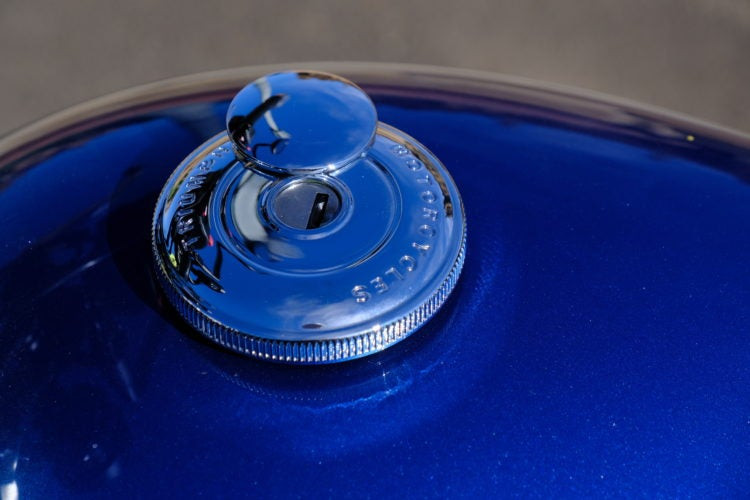 The fuel tank cap, while functional with a lock, is a less visually appealing element.
The fuel tank cap, while functional with a lock, is a less visually appealing element.
Routine maintenance, such as air filter changes, is designed to be user-friendly. Fitting a DNA filter is a straightforward task, achievable even for those with limited mechanical experience.
The Triumph Street Twin‘s overall appeal is undeniable. It’s a genuinely “nice” motorcycle in the best sense of the word – well-rounded, stylish, and enjoyable to ride. So much so, in fact, that it’s become a project bike. The plan is to modify it, creating a custom “High Street Twin” or “Tearoom Racer.” The final direction will be influenced by popular opinion, highlighting the engaging and community-focused spirit that often surrounds motorcycles like the Triumph Street Twin.

